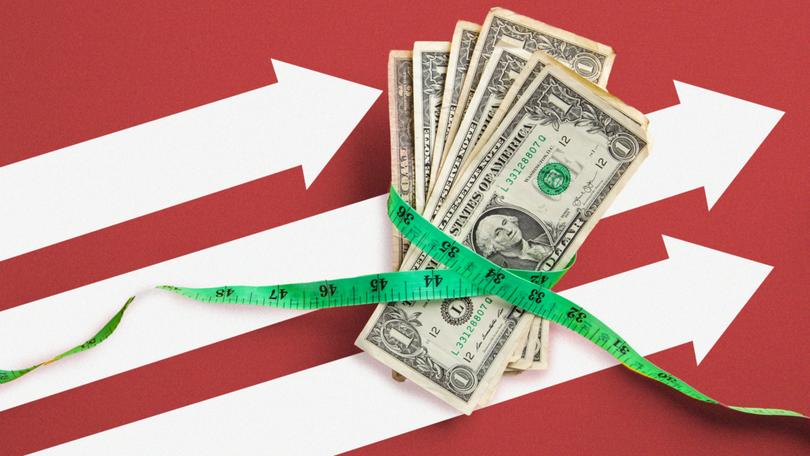THE ECONOMIST: American inflation looks increasingly worrying

Jerome Powell’s press conferences — sometimes market-moving events —have attracted less notice of late.
With Donald Trump in the White House, the chair of the Federal Reserve faces competition for attention.
Yet a recent inflation reading has returned prices to the public eye.
Sign up to The Nightly's newsletters.
Get the first look at the digital newspaper, curated daily stories and breaking headlines delivered to your inbox.
By continuing you agree to our Terms and Privacy Policy.In January America’s “core” consumer price index, which strips out volatile food and energy costs, jumped by 5.5 per cent at an annualised rate.
In response, Larry Summers, a former treasury secretary, called this the “riskiest period for inflation policy since the early Biden administration”, after which inflation rose to its highest in four decades.
Even more worrisome is that Americans are starting to expect higher inflation.
In February preliminary data from the University of Michigan’s consumer survey showed that the median expectation for price growth over the next year had reached 4.3 per cent.
Since Mr Trump’s election, that figure has surged by 1.7 percentage points — the joint-largest three-month rise since 1979, when inflation hit double digits.
Some market measures tell a similar story.
The one- and two-year break-even inflation rates, based on the difference between nominal and inflation-adjusted Treasury yields, are up by 1.7 and 0.8 percentage points respectively since November.
What is going on? Historically, consumer expectations reflect two factors above all else: the current inflation rate and petrol prices.
Indeed, in normal times, about 80 per cent of variation in quarterly one-year-ahead inflation expectations is explained by just these two variables, according to a simple model we have built.
Yet when we test the model on this year’s data, it suddenly becomes unreliable.
If the pre-Trump associations held, median consumer inflation expectations would be nearly a percentage point lower.
A similar, if less pronounced, pattern can be seen with market forecasts.
This gap between expectations and the historical trend appears to be driven by Mr Trump’s tariff threats.
Consumers’ uncertainty about inflation is elevated: the standard deviation of responses to the University of Michigan’s survey is at its highest since 1980.
Lots of Americans appear to be taking the president at his word when he warns that “prices could go up somewhat short term”.
Those who say that they are opposed to tariffs expect inflation to be just under 5 per cent in a year’s time, yanking up the overall average.
Consumer inflation expectations are often self-fulfilling.
When workers expect higher costs in the future, they seek higher pay.
Meanwhile, shoppers rush to make purchases in anticipation of price rises, increasing demand and thereby pushing up prices.
Recent data show that such a dynamic may be emerging.
American wages grew at an annualised rate of 5.9 per cent in January.
More than 20 per cent of respondents to the University of Michigan’s survey say that now is a good time to buy expensive items such as electronics or furniture as prices are likely to climb soon.
That is the highest share in three decades.
Fed officials are paying close attention.
Lorie Logan, president of the central bank’s Dallas branch, has recently warned that when inflation expectations spiral out of control, restoring price stability often comes “only at a great economic cost”.
Current inflation uncertainty, she added, is “a reminder that expectations won’t stay anchored for ever on their own”.
Expectations for the long-term path of inflation are more mixed.
The “five-year, five-year forward” measure, which is favoured by central bankers and derived from interest-rate futures contracts, is largely unchanged.
Yet other similar measures are creeping higher.
Market-based forecasts for the five-year break-even inflation rate have edged up.
Median five-year-ahead consumer expectations have also climbed, to 3.3 per cent — above their peak during the inflation of recent years.
A partisan divide has emerged about long-term expectations, too.
Democrats now expect a startling 4.2 per cent average rise in prices over the next five years.
Research suggests that Republicans’ concerns about potential price rises during the COVID-19 pandemic led to additional inflation in the years that followed.
Mr Trump’s attacks on the Fed, insisting that Mr Powell should cut interest rates, are a contributing factor to Democrats’ worries this time.
Although the president enjoys taking on bureaucrats, he might discover that doing so can backfire.
Originally published as American inflation looks increasingly worrying
